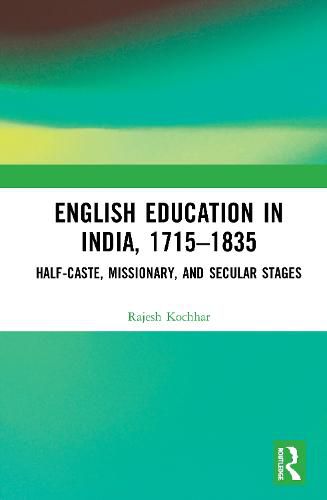Readings Newsletter
Become a Readings Member to make your shopping experience even easier.
Sign in or sign up for free!
You’re not far away from qualifying for FREE standard shipping within Australia
You’ve qualified for FREE standard shipping within Australia
The cart is loading…






This book identifies and describes the first stage in the advent and growth of English education in India. The first schools in India were the charity schools, asylums and orphanages opened under the auspices of the Church of England for religious instruction, training and care of ‘half-caste’ or mixed-race children, the progeny of Protestant fathers from Indian women. It examines the influence of the ‘half-caste’ community and the missionaries on the growing Indian demand for English education and opportunities for employment.
The well-entrenched scenarios on the pre-history of Hindoo College Calcutta are re-examined in the light of new evidence discussed here for the first time. The book further analyses the shifts in the educational policies by the British colonial administrators and the interventions by the likes of Trevelyan, Macaulay and Bentinck.
Detailed and insightful, this volume will be of great interest to students and researchers of history, literature, postcolonial studies, cultural studies, colonial expansion, and South Asian studies.
$9.00 standard shipping within Australia
FREE standard shipping within Australia for orders over $100.00
Express & International shipping calculated at checkout
This book identifies and describes the first stage in the advent and growth of English education in India. The first schools in India were the charity schools, asylums and orphanages opened under the auspices of the Church of England for religious instruction, training and care of ‘half-caste’ or mixed-race children, the progeny of Protestant fathers from Indian women. It examines the influence of the ‘half-caste’ community and the missionaries on the growing Indian demand for English education and opportunities for employment.
The well-entrenched scenarios on the pre-history of Hindoo College Calcutta are re-examined in the light of new evidence discussed here for the first time. The book further analyses the shifts in the educational policies by the British colonial administrators and the interventions by the likes of Trevelyan, Macaulay and Bentinck.
Detailed and insightful, this volume will be of great interest to students and researchers of history, literature, postcolonial studies, cultural studies, colonial expansion, and South Asian studies.